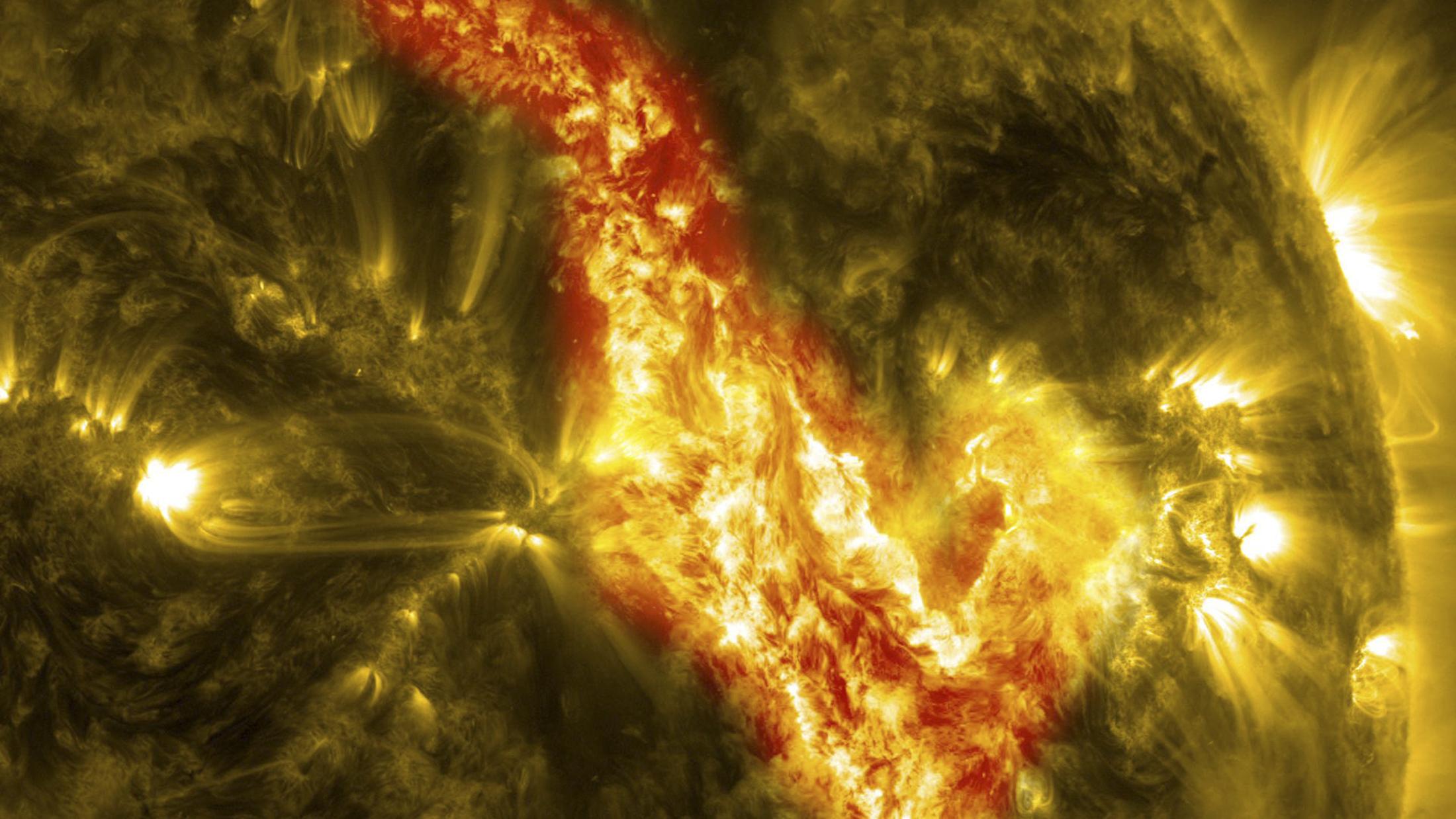What's hotter than the surface of the Sun?
Nasa study offers new evidence for 'nanoflares' - tiny, intense solar events that heat the Sun's atmosphere to millions of degrees hotter than its surface

You might be forgiven for thinking that when it comes to hot stuff you can’t beat the surface of the Sun. Scientists, however, have known for years that the surrounding atmosphere of the star is actually much, much hotter – and now they think they know why.
While the visible surface of the Sun, the photosphere, reaches temperatures of 6,000 degrees Kelvin or 5,700 degrees Celsius, the star’s corona - the fluctuating area of plasma that extends millions of kilometres into space - regularly exceeds heights of 2 million Kelvin.
"That's a bit of a puzzle," says Jeff Brosius, a space scientist with the University of Washington. "Things usually get cooler farther away from a hot source. When you're roasting a marshmallow you move it closer to the fire to cook it, not farther away."
New research published by Brosius and his team in the Astrophysical Journal gives credence to the idea that a solar phenomenon known as nanoflares are responsible – extremely intense bursts of heat and energy that act like tiny heating elements in the surrounding plasma.
In order to do so nanoflares are thought to reach temperatures of 10 million Kelvin. Unfortunately this means that the resulting solar event is so short-lived and small that scientists can’t observe them directly - instead, they have to rely on measuring wavelengths of light emitted at those temperatures.
This is exactly what Brosius and his team have done, scanning a particularly active region of the Sun using a relatively rough-and-ready spacecraft known as a sounding rocket. These are launched into Space for 15 minutes at a time, reaching heights of around 200 miles before falling back to Earth.
This type of mission produces just six minutes of observational data, but this proved enough for Brosius and his team. The craft they launched in April last year came back with data described as the nanoflares’ “smoking gun”: a spectral emission corresponding to material heated to 10 million degrees.
For astronomers, confirming the existence of nanoflares is just another step towards solving the complex puzzle of the Sun's solar 'ecosystem', but for Brosius the discovery is a little more tangible.
"This [...] really gives us the strongest evidence yet for the presence of nanoflares," he told ScienceDaily. "The fact that we were able to resolve this emission line so clearly from its neighbors is what makes spectroscopists like me stay awake at night with excitement."
Subscribe to Independent Premium to bookmark this article
Want to bookmark your favourite articles and stories to read or reference later? Start your Independent Premium subscription today.

Join our commenting forum
Join thought-provoking conversations, follow other Independent readers and see their replies